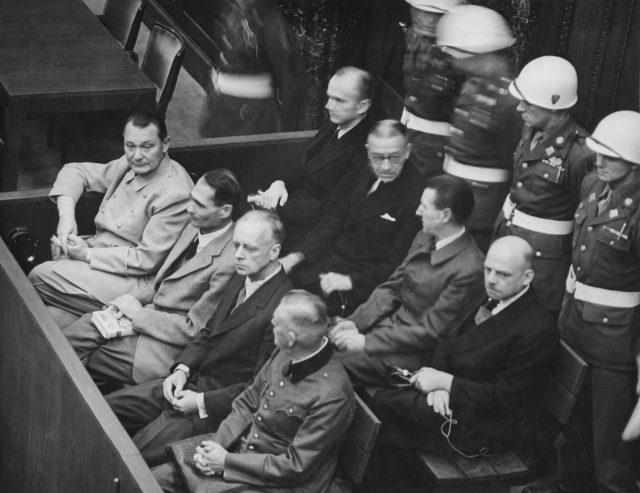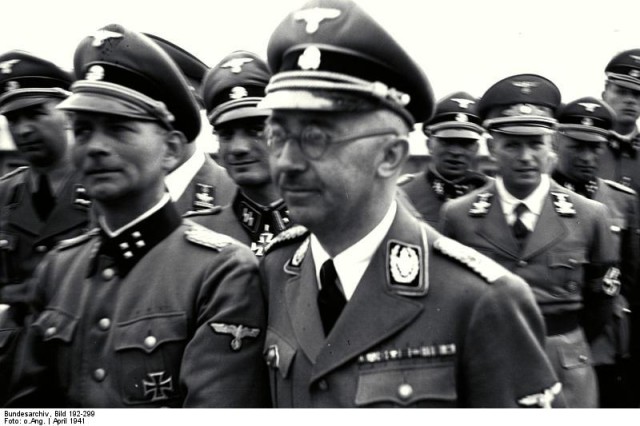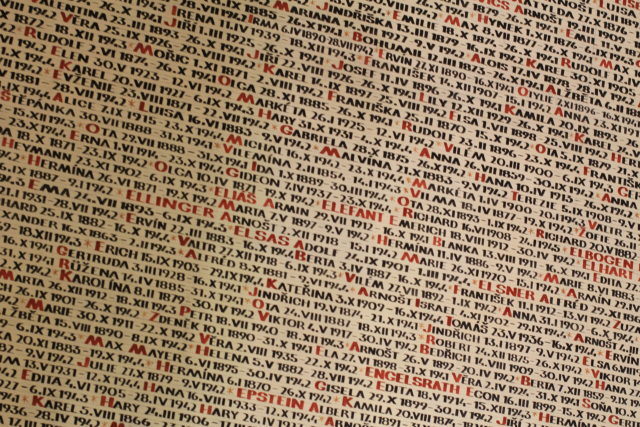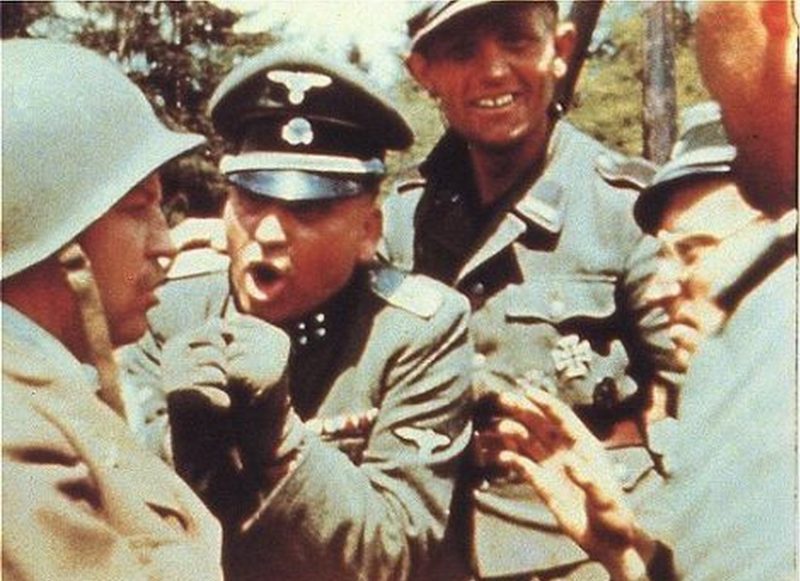From the end of the Second World War to this day, the way the public perceives the role of the infamous Waffen-SS, the armed wing of the SS, has often been a matter of discussion. Many of the Waffen-SS officers escaped justice, fleeing to South America, but a lesser known fact is that many of them remained in Germany, where they lived unpunished until they died.
After the war, many war crimes surfaced, and the horrors of the Holocaust and other crimes against humanity became known to the public. In 1945, a network of death camps was revealed, giving more than substantial evidence of the state-sponsored extermination campaign. In other words, Hitler had his elaborate plans to conduct his genocide of the Jews and other ethnic groups, and he had the military force to do it.
After the crushing defeat, Germany was in the hands of the Allies. To deal with the defeated party, a conference was held in Potsdam by the Soviet Union, United Kingdom, and the United States from 17 July to 2 August 1945.
The Potsdam Conference determined the occupation policies that the Allied-occupied Germany was to face. These included demilitarization, denazification, democratization, and decentralization. Thus, a hunt began for the perpetrators of Nazi crimes.

During the Nuremberg Trials in 1946, a lot of the crimes committed by the Nazi regime were directly attached to the Waffen-SS officers and soldiers. This laid the ground for the full rehabilitation of the Wehrmacht, which followed several years later.
In 1951 it was obvious that the Allies and the Soviet Union were becoming rival parties on the global political stage. That year, the former Supreme Allied Commander, Dwight Eisenhower, made an official statement. He stressed that difference should be made between the German Army, which represented the German military honor, and the Waffen SS which were nothing more than a criminal paramilitary organization that committed atrocities all over occupied Europe, following Hitler’s orders directly.
This distinction was made in order to reorganize the German Army as a potential defense force against the Soviet invasion. The US and Britain needed the new Germany on their side, but the main bulk of the Army leadership was locked up and being a soldier wasn’t exactly popular in a post-war Germany.
As the German Army regained its honor, the ex-members of the Waffen-SS wanted their piece of the cake. Some war crime convicts who belonged to the Wehrmacht were released in order to contribute to the forming of the new German Army ― the Bundeswehr. Military pensions were restored and the ban on forming veteran societies was lifted. All of this, of course, didn’t apply to the members of the SS.
Subsequently, the former members of the “Hitler’s elite” created a veteran organization of their own, championing the rights of surviving Waffen SS soldiers. In late 1950 a small number of loosely tied SS veteran organizations existed under the umbrella lobby group called HIAG ― Hilfsgemeinschaft auf Gegenseitigkeit der Angehörigen der ehemaligen Waffen-SS, literally “Mutual aid association of former Waffen-SS members”. By October 1951, HIAG consisted of 376 local branches.
The organization campaigned for the legal, economic and historical rehabilitation of the Waffen-SS, using contacts with political parties to manipulate them for its purposes. Its leadership combined some of the highest ranking Waffen SS officers who survived the war. Most notable among them were generals Felix Steiner, Otto Kumm and Paul Hausser, who were all decorated with highest Nazi-German military honors. Among their ranks were convicted war criminals such as Sepp Dietrich and Kurt Meyer. The later, Meyer, became infamous for the Ardenne Abbey massacre in which 20 Canadian POWs were brutally murdered.

Still, the men from the SS had strong ties with the post-war German government and they managed to produce a number of apologetic books and magazines such as Der Freiwillige (The Volunteer). In these, they justified themselves as part of the Wehrmacht and distanced themselves from the war crimes through the slogan “Soldiers, like all others.” This became publicly used even by the President of West Germany, Konrad Adenauer. In addition to this, they held public speeches and support rallies, in the hope of gaining popular support for their cause.
By the mid-1950s, HIAG established an image that separated the Waffen-SS from other SS formations and shifted responsibility for crimes that could not be denied to the Allgemeine-SS (security and police), the SS-Totenkopfverbände and the Einsatzgruppen (mobile killing units). The Waffen-SS was thus successfully integrated into the myth of the clean Wehrmacht.
Some of the most controversial events staged by HIAG include a torchlit procession in 1953, which clearly resembled the torchlit parade after Hitler was appointed Chancellor in 1933. They marched up to Staufeneck Castle in Bavaria, chanting Nazi songs, including the one titled This Is the Guard that Adolf Hitler Loves.
The organization often inflated its numbers, claiming that it held the support of over two million people, but various historians claim that the organization had 250,000 supporters at the height of its popularity, in the 1960s. This is how the HIAG took advantage of the larger political parties the in postwar Germany ― by bluffing their way into politics and manipulating their spheres of influence through promises of providing voters.
HIAG accomplished more and more, even establishing its own publishing wing. Books like Cavalry Divisions of the Waffen-SS (1982) which depicted the SS cavalry units responsible for slaughter of more than 23,000 Jews, or Panzer Grenadiers of the ‘Viking’ Division in Pictures (1984), about the infamous Viking Divison which, among other crimes, participated in conducting the death march of Hungarian Jews in spring 1945 were printed and distributed freely.

There were a number of autobiographies (most notable – Grenadiers by Kurt Meyer) depicting the life of the Waffen-SS on the frontline or books that in detail explained the history of the SS with an affirmative tone.
Numerous historians have dismissed and ridiculed these books as an obscene act of historical revisionism, but nevertheless, HIAG continued with their work until 1992, when the Federal German Government disbanded the organization deeming it Neo-Nazi. Of course, it was evident that the organization was Nazi-oriented since its inception, but it remained functional with the help of cunning politics, some popular support and an enormous sense of self-importance.
Even though HIAG was involved in controversies, the group was never a real threat to democracy in Germany. As the historian James H. Diehl pointed out: “HIAG’s main goal was pensions, not a restoration of the Third Reich.”
The effort of HIAG to rehabilitate the Waffen-SS legally failed, but their troubling legacy remains one of the main inspiration pools for the European far right today. The magazine Der Freiwillige (The Volunteer), founded by the HIAG organization is still active today.
